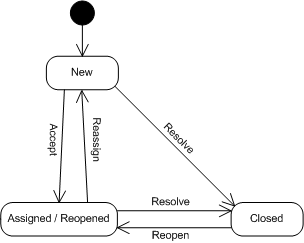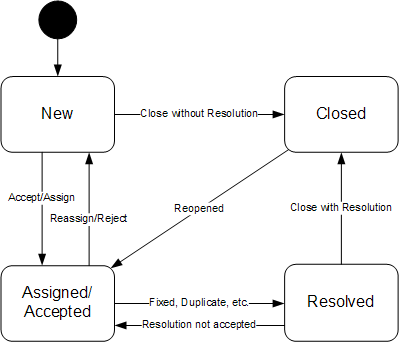December 26, 2006
The Honorable George W. Bush
President of the United States
The White House
1600 Pennsylvania Avenue NW
Washington, DC 20500
Dear Mr. President,
I hope the holidays find you well, and wish you happy and productive new year.
I am not an expert on the topic of voting, nor am I a professional security expert, but I do try and follow the news with regards to the intersection of the two. I watched the HBO documentary “Hacking Democracy” this weekend while wrapping presents, and was flat-out disgusted. It was not especially well-made, made no attempt at being objective, nor was most of its information news to me, but I was moved when I watched a mock election be rigged using actual voting systems and saw a real, respected election official be speechless and dumbfounded that his job was completely undermined.
There is no simple solution to secure voting, nor is it remotely probable that any election will ever be 100.0% honest, but there are some monumentally obvious flaws in the way we currently count votes. The largest is the issue of the lack of openness of the software, systems, and processes that are involved.
I am a software developer and most non-programmers I’ve talked to have a difficult time understanding the idea that public access to the “secret codes” of software, AKA the source code, is more secure than private or closed source code. The general opinion is that if you can see the inner workings of something, it’s easier to break it, which is valid and true. The next step in this thought process, however, is more critical and is one that most people don’t take. That is that if you cannot see the inner workings of something that is broken, it’s more difficult to fix it.
The idea of “security by obscurity”, sometimes referred to as “obsecurity”, is valid and necessary when it comes to information such as private financial data, personal information like medical histories, and intelligence gathered by our military and other government agencies. However, regarding mechanisms and processes, such as software, obscurity lessens security. This is doubly true when those mechanisms are designed to collect and analyze public data, such as votes.
Here’s a dirty secret of the programming craft: 99.9999% of software is broken. By broken I mean there is some bug somewhere in it. In new or rarely used software these bugs can be serious and misleading. In most mature software, it’s nothing serious; something doesn’t display right, some obscure error condition is handled poorly, etc. This applies to video games, email programs, ATM software, Windows, Linux, etc. as well as voting software.
So how do you weed out these bugs? You test, over and over and over again. When you find a bug, you test again, even things that you didn’t fix (AKA regression testing). Eventually, you’ve fixed all or most of the bugs that were found, satisfied your unit tests and requirements, and you ship it. Then your customer does something you never planned on, maybe because they are being silly or stupid, or you aren’t the programming god you thought you were, or your QA staff is overworked, or it just wasn’t possible for you to test in the lab. This is why you get Windows updates every week, and why there are dozens of bug fixes for every Linux kernel, patches for every video game, it’s simply unavoidable. The more something is used, the more bugs are found, and the better it becomes.
Voting software isn’t used very much. Most machines are used one day every year or two. Excel has been used by millions of people every day for nearly 20 years, and there are still bugs in it. If I’m making an inventory of my baseball cards and have a problem with Excel I can report it to Microsoft and hopefully a ticket will be opened and hopefully they will fix it. The difference between a spreadsheet package and a voting system is that my grandfathers didn’t risk their lives overseas to make sure “=SUM(D3:D13)” was accurate, they did it so that I would grow up in a better world than they did, and just as importantly, have the power to make it better for my grandkids.
It is absolutely imperative that we apply the highest possible standards of scrutiny, security, and integrity to the systems that facilitate our most sacred public right. Voting software, hardware, and system should not only be open, they should be the zenith of openness. The public should be able to download complete specifications for every piece of hardware on every type of voting machine out there, from the device I vote on to the system that tabulates it to the printers that make the reports. We should have access to every line of code used in the entire process. I should be able to test it myself and find flaws or solicit advice from those I trust. The public should have as much access to the hardware as is feasible. Regular citizens, universities and vendors should be encouraged with bounties to find and report flaws they find. Defect reports on voting systems should be legal documents, also open to review by all. There should be digitally signed video publicly viewable via live broadcast or within hours of all access to every machine with the sole exception of the person casting a ballot. There is room for only ONE secret in this entire process, and that is who an individual voted for.
I would be exceptionally pleased if you would propose or support legislation to help protect our votes by virtue of an open and honest process. It would not only validate the sacrifices millions of Americans have already made, but it would set an example that other democracies and future generations will aspire to.
Sincerely,
Eric F. Savage
Also sent to my Senators Kennedy and Kerry, Representative Frank, Governor-Elect Patrick, State Senators Brown and Creem and Secretary of the Commonwealth Galvin. If you feel similarly I encourage you do write to your officials and feel free to borrow or copy from my letter.
For more, better information on this topic I recommend checking out Ben Adida’s Blog and Black Box Voting. A web search for ‘secure voting’ or similar topics will also turn up piles of other opinions and (often scary) facts.



 Sometimes, a term or phrase has the potential to break out of the group and escape to the community and beyond, and I’m going to nominate one to do just that, or at least get it into Google. This term was apparently born after the rubbonics were codified, and I can’t remember the date, but I do remember the circumstances.
Sometimes, a term or phrase has the potential to break out of the group and escape to the community and beyond, and I’m going to nominate one to do just that, or at least get it into Google. This term was apparently born after the rubbonics were codified, and I can’t remember the date, but I do remember the circumstances.